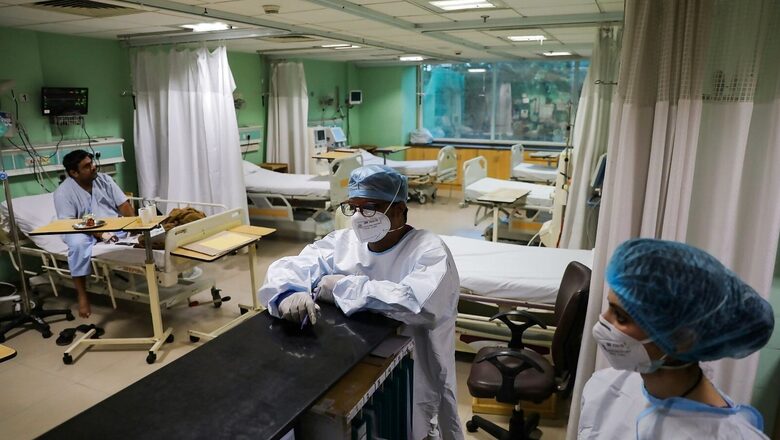
views
Around 70 years ago, when India established its First Primary Health Centre (PHC), on the recommendation of the Bhore Committee, the idea was Indians will soon have access to equitable, affordable and quality health care services that are accountable and responsive to their needs. Decades later saw a tremendous growth in the number of Sub-Centres (SCs), PHCs and Community Health Centres (CHCs), trying to cope up with the rapidly growing population.
Having stated that, there has been an issue that a large number of people continue to not have access to government health facilities. According to the Fifth Round of National Family Health Survey, 2019-21, half of the families in India do not usually seek healthcare from public health facilities. Even for minor health issues like cold, fever, and diarrhoea, Indians are increasingly seeking private health care. Despite expensive treatments, people accessing private facilities indicate the possibility of lack of access and quality care at government health centres.
The NFHS-5 report shows that 49.9% Indian households do not generally use a government health facility. This number however is lower than 55% as of NFHS-4 in 2015-16. The choice of private facilities over public ones was made by people both from rural and urban areas.
Why Does India Reject Government Healthcare?
Although there has been a marginal increase in the number of people utilising public healthcare facilities since the last survey, it still hovers around half of the population. Nearly 40% of the households that do not generally use a government health facility indicated that there wasn’t any nearby. The reason was most stated in low income states such as Uttar Pradesh, Jharkhand or hilly states of Uttarakhand, Sikkim and Mizoram. Transportation services in remote hilly regions of the country are negligible, with poor road infrastructure. Most of the time, travelling long distances isn’t the most viable option, making private facilities the only choice. The country has nearly twice as many private hospitals as public ones—an estimated 43 487 versus 25 7781. There is definitely ease of access to private health facilities.
Most government-run hospitals are often overcrowded and hence many patients often choose private run healthcare centres for their convenience. This is not only true for primary health centres but also tertiary care centres such as AIIMS. Reports have shown that as many as 10,000 people reach OPDs of AIIMS on a daily basis. Other reasons include inconvenient timings or missing staff at most times.
Improving Public Hospitals for Improving Health
India has witnessed a historic underinvestment in the health workforce. Hiring and filling vacancies across the country is the first step in this process. Identifying critical regions which need new infrastructure is also quite important. Apart from this, it is necessary that we prepare the health professionals to mobilise themselves in case of an emergency like the COVID-19 pandemic.
Absenteeism is directly impacted by a shortage of supplies, insufficient infrastructure, and poor staff supervision. These factors add to the already low motivation, especially in rural areas. Continuous and coordinated efforts towards reducing the toll on the workforce will help.
Many people don’t use hospital facilities due to preconceived notions or just lack of awareness about the services. Community health workers can play a huge role in linking people to the health centres. At most times, ASHAs and ANMs belong to the community they are serving and hence they are already familiar with the population, their culture and local conditions. They can help in bridging the gap by communicating about facilities and services at public facilities.
Alternatives to increasing Usage of Public Health Facilities
The important question we have to ask ourselves is whether we want to increase the usage of public facilities or do we want to improve the overall population health. Merely increasing public healthcare resources is not the most effective way to improve health outcomes. The priority is that people have access to high quality, safe and affordable healthcare (Astana Declaration, 2018). In a resource limited setting such as ours we have to take into account our constraints and work within them.
Along with expanding public health facilities, making it easier for the private sector to fill in the gaps in healthcare services is critical. For this, rules such as having a minimum number of chairs in a doctor’s consultation room [The Clinical Establishments (Registration and Regulation) Act, 2010] are needed to be repealed. Regulations should try to solve issues such as the information gap between the doctor and the patient. Allowing private businesses to thrive would expand our country’s healthcare facilities, allowing the government to focus on providing great healthcare to the most in need.
India still doesn’t meet WHO prescribed 1 doctor per 1,000 population at 1 per 1445 people. An important step in this process is to ease restrictions around setting up and running of medical and paramedical colleges. This would lead to an increase in the much needed healthcare force of the country. This situation is even more severe in regions such as Bihar, Madhya Pradesh and Jammu-Kashmir.
It is also important to relax regulations in the pharmaceutical industry and take advantage of the country’s large drug manufacturing base to its fullest potential. This will help in manufacturing and supplying drugs and equipment at cheaper prices, making them reachable to a larger population.
A push to the population for increasing insurance coverage would lead to a decrease in the large out of pocket expense incurred by the public and would ultimately lead to better medical and financial outcomes.
As we aim for achieving the Universal Health Coverage in India, it is important that we create sustainable health systems that prioritise people first. With strong political and economic commitment, we can build public health systems which are resilient, agile and sufficient.
Dr Harshit Kukreja is Research Analyst, and Mahek Nankani is Assistant Programme Manager at Takshashila Institution. The views expressed in this article are those of the authors and do not represent the stand of this publication.
Read all the Latest News, Breaking News, watch Top Videos and Live TV here.



















Comments
0 comment